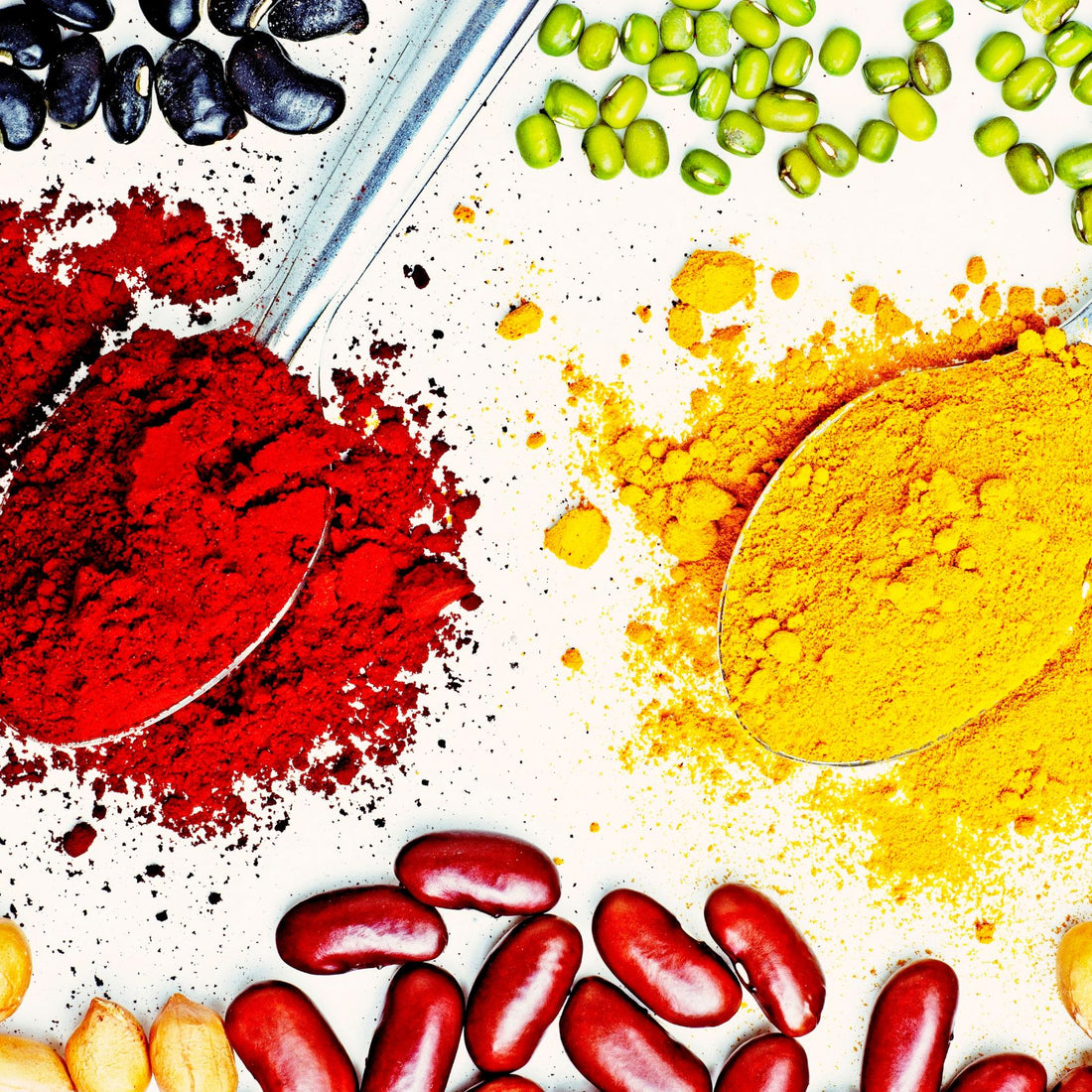
Nature's Palette: The Health Benefits of Natural Food Colouring
Share
In a world increasingly conscious of what goes into our food, natural food coloring stands out as a beacon of health and vitality. The shift from synthetic dyes to natural colorants is not just a trend but a movement towards a healthier lifestyle.
Let's explore why natural food coloring, often referred to as nature's palette, is a significant step forward in food science and wellness.
Understanding Natural Food Coloring
Natural food coloring is derived from a wide range of sources like fruits, vegetables, plants, and minerals. These colors come directly from nature, offering a spectrum of hues as vibrant and diverse as the sources they are extracted from. From the deep purples of beetroot to the bright yellows of turmeric, these natural extracts not only add visual appeal to our food but also bring various health benefits.
The Health Benefits
Rich in Nutrients
Natural colorants are often rich in nutrients, including vitamins, minerals, and antioxidants. For instance, spirulina, used for its brilliant blue hue, is known for its protein content and vitamins. Similarly, beetroot powder, besides providing a striking red color, is a great source of fiber, folate (vitamin B9), manganese, potassium, iron, and vitamin C.
Free from Harmful Chemicals
Many synthetic food dyes contain chemicals that have been linked to adverse health effects. In contrast, natural food colors are free from such harmful substances, making them a safer option, especially for children who can be more sensitive to these chemical additives.
Allergy-Friendly
Natural food colorings are typically free from common allergens found in some synthetic dyes. This makes them an ideal choice for individuals with specific food allergies or sensitivities.
Better Digestive Health
Since natural colorants come from food sources, they are generally easier for the body to process and digest compared to synthetic dyes.
The Environmental Advantage
Choosing natural colorants also benefits the environment. The production of synthetic dyes often involves processes that can be harmful to the ecosystem. Natural colorants, especially those derived from sustainable sources, have a lower environmental impact.
Applications Beyond Food
The use of natural colorants extends beyond food. With the growing demand for clean beauty products, these colorants are increasingly used in cosmetics, offering a safer alternative to synthetic colors in products like lipsticks and blushes.
A World of Color Possibilities
The beauty of natural food coloring lies in its versatility. Not only can these colors be mixed to create a wide range of shades, but they also open up a world of creative possibilities in baking, beverage making, and beyond.
For instance, blending spirulina and turmeric can yield a vibrant green, ideal for decorating a nature-themed cake. Or, a combination of beetroot and blueberry can create a deep purple, perfect for a berry-flavored smoothie.
Embracing Nature's Palette
As we become more mindful of our health and the environment, embracing natural food coloring is a positive step forward. By choosing nature's palette, we're not just making our food more visually appealing; we're opting for a healthier, more sustainable way of living.
Whether you're a professional chef, a home baker, or just someone who loves to experiment with food, natural colorants offer a world of possibilities to explore and enjoy.
